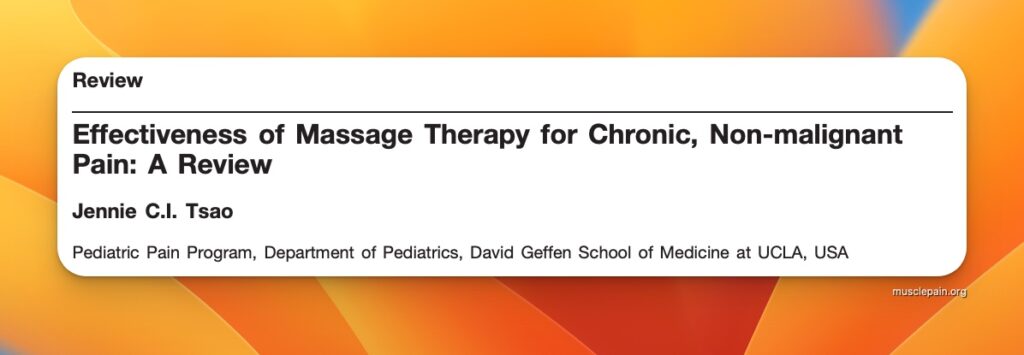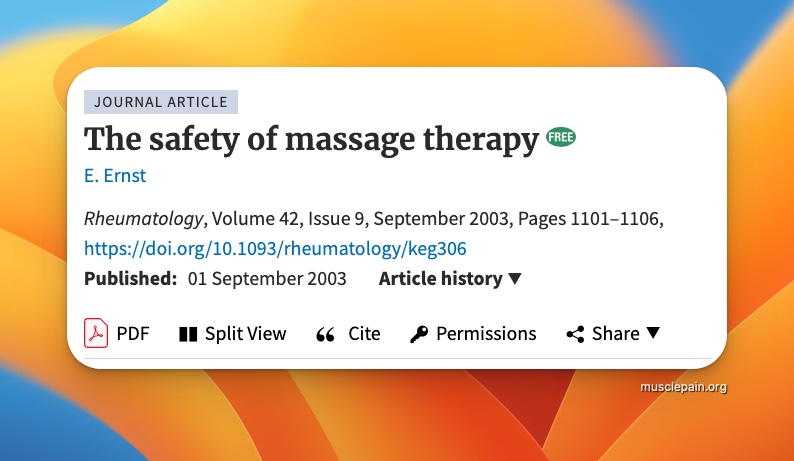Massage can be beneficial for kidney pain in some cases. While there is limited evidence specifically addressing the effects of massage on kidney pain, several studies have shown the potential benefits of massage for individuals with chronic kidney disease (CKD) and those undergoing hemodialysis.
- For example, foot massage has been found to reduce fatigue and improve the quality of life in hemodialysis patients.
- Additionally, acupressure, reflexology, and massage therapies have demonstrated efficacy in alleviating sleep disturbance and fatigue in individuals with chronic kidney disease.
- Furthermore, massage can help stimulate blood circulation and increase immunity, which may be beneficial for individuals with kidney issues.
Importance of Massage Therapy

Massage therapy can provide relief for various types of pain, but when it comes to kidney pain, it is important to understand the underlying cause before considering massage as a treatment option. Kidney pain can be caused by various conditions such as kidney stones, urinary tract infections, kidney infections, or kidney disease.
Massage therapy can help alleviate muscle tension and promote relaxation, which may indirectly help with pain management. However, it is crucial to consult with a healthcare professional or a qualified massage therapist before undergoing any massage therapy for kidney pain. They can assess your specific condition and provide guidance on whether massage therapy is appropriate for you.
It is important to note that while massage therapy can be beneficial for kidney pain, it should not replace medical treatment or advice from healthcare professionals. It is always advisable to consult with a healthcare provider before undergoing any new treatment, including massage therapy, especially if there are underlying medical conditions or concerns.
How could massage work for pain?
- Mechanotransduction and Immunomodulation: Waters-Banker et al. (2014) proposed that massage therapy may attenuate the inflammatory process and facilitate recovery from muscular injuries through mechanotransduction – the conversion of mechanical stimulus into cellular signaling. This process potentially alters signaling pathways associated with inflammation, thereby decreasing secondary injury, nerve sensitization, and pain, and promoting recovery from muscle damage (Waters-Banker, Dupont-Versteegden, Kitzman, & Butterfield, 2014).
- Influence on Pain Perception: Goats (1994) described how massage techniques, both manual and mechanical, can effectively relieve pain, swelling, muscle spasm, and restricted movement. The study systematically described these techniques and reviewed their indications for use in sports medicine, suggesting a direct mechanical effect on tissues and an influence on pain perception (Goats, 1994).
- Physiological Responses to Pressure Application: Roberts (2011) investigated the effects of varying levels of pressure during massage on resting muscular activity. The study highlighted that light or moderate pressure massage could reduce the gain of spinal nociceptive reflexes, which are elevated in chronic pain syndromes. This suggests a mechanism by which massage may relieve chronic pain (Roberts, 2011).
- Neurological and Psychological Mechanisms: Zhong et al. (2019) reviewed various studies to understand the mechanisms of massage therapy, including biochemical, physiological, neurological, and psychological mechanisms. The review discussed how massage influences muscle stiffness, blood flow, heart rate variability, and psychological factors like mood states and cortisol levels, contributing to pain relief (Zhong, Wang, Wan, & Lei, 2019).
- Reduction of Inflammatory Signaling: A study by Crane et al. (2012) found that massage therapy can attenuate inflammatory signaling and promote mitochondrial biogenesis in muscle cells after exercise-induced damage. This suggests that massage therapy can reduce cellular stress and inflammation, contributing to pain relief (Crane, Ogborn, Cupido, Melov, Hubbard, Bourgeois, & Tarnopolsky, 2012).
Is massage for kidney pain effective?

The effectiveness of massage therapy for kidney pain is not straightforward and requires careful consideration. While massage therapy can offer benefits for various types of pain and discomfort, there are potential risks and limitations, especially in the context of kidney-related issues.
- Risks Associated with Massage Therapy: A study by Ernst (2003) highlights that massage is not entirely risk-free. The review reported cases where massage therapy led to serious adverse effects, including issues related to the kidneys such as embolization of a kidney and various pain syndromes. The majority of these adverse effects were associated with non-traditional massage techniques or massage delivered by laymen, rather than professional massage therapists.
- Specific Case of Kidney Injury Post-Massage: Lin et al. (2019) documented a case where a patient developed a subcapsular hematoma, a type of kidney injury, following a Chinese massage. This suggests that massage, particularly if not performed correctly, can potentially cause harm to the kidneys, especially in individuals with certain vulnerabilities like a lower body mass index (BMI) or those using certain medications like aspirin or anticoagulants (Lin, Xu, Liu, & He, 2019).
- Massage for Pain Management in General: While not directly focused on kidney pain, Chou et al. (2020) reviewed various treatments for acute pain, including massage therapy. They concluded that massage might be effective for some types of postoperative pain, but the study does not specifically address kidney pain (Chou, Wagner, Ahmed, Blazina, Brodt, Buckley, Cheney, Choo, Dana, Gordon, Khandelwal, Kantner, McDonagh, Sedgley, & Skelly, 2020).
- Massage in Chronic Kidney Failure: A study by Bayülgen and Gün (2022) discussed the use of massage among other therapies to alleviate symptoms in hemodialysis patients. They found that methods like massage were effective in reducing pain and anxiety and improving sleep quality in these patients. However, it’s important to note that this study focused on general symptoms in hemodialysis patients, not specifically on kidney pain (Bayülgen & Gün, 2022).
It is worth noting that massage therapy should not be considered a standalone treatment for kidney pain. It should be used in conjunction with other medical interventions and treatments recommended by your healthcare provider.
References
- Ernst, E. (2003). The safety of massage therapy. Rheumatology, 42(9), 1101-1106. The safety of massage therapy
- Lin, B., Xu, X., Liu, Y., & He, Q. (2019). Acute page kidney phenomenon following Chinese massage. Nephrology, 25. Acute page kidney phenomenon following Chinese massage
- Chou, R., Wagner, J., Ahmed, A. Y., Blazina, I., Brodt, E., Buckley, D., Cheney, T. P., Choo, E., Dana, T., Gordon, D., Khandelwal, S., Kantner, S., McDonagh, M., Sedgley, C., & Skelly, A. (2020). Treatments for Acute Pain: A Systematic Review. Treatments for Acute Pain: A Systematic Review
- Bayülgen, M. Y., & Gün, M. (2022). Effect of Complementary and Integrative Treatments on Fatigue Symptoms in Hemodialysis Patients. Holistic Nursing Practice, 36, 17-27. Effect of Complementary and Integrative Treatments on Fatigue Symptoms in Hemodialysis Patients.
- Waters-Banker, C., Dupont-Versteegden, E., Kitzman, P., & Butterfield, T. (2014). Investigating the mechanisms of massage efficacy: the role of mechanical immunomodulation. Journal of Athletic Training, 49(2), 266-273. Investigating the mechanisms of massage efficacy
- Goats, G. C. (1994). Massage–the scientific basis of an ancient art: Part 1. The techniques. British Journal of Sports Medicine, 28, 149-152. Massage–the scientific basis of an ancient art: Part 1
- Roberts, L. (2011). Effects of Patterns of Pressure Application on Resting Electromyography During Massage. International Journal of Therapeutic Massage & Bodywork, 4, 4-11. Effects of Patterns of Pressure Application on Resting Electromyography During Massage
- Zhong, H., Wang, C., Wan, Z., & Lei, J. (2019). The possible mechanisms of massage therapy. Biomedical Research-Tokyo, 30, 1-6. The possible mechanisms of massage therapy
- Crane, J., Ogborn, D., Cupido, C., Melov, S., Hubbard, A., Bourgeois, J., & Tarnopolsky, M. (2012). Massage Therapy Attenuates Inflammatory Signaling After Exercise-Induced Muscle Damage. Science Translational Medicine, 4, 119ra13. Massage Therapy Attenuates Inflammatory Signaling After Exercise-Induced Muscle Damage
MD, PhD. Physical Medicine & Rehabilitation Physician from São Paulo - Brazil. Pain Fellowship in University of São Paulo.

